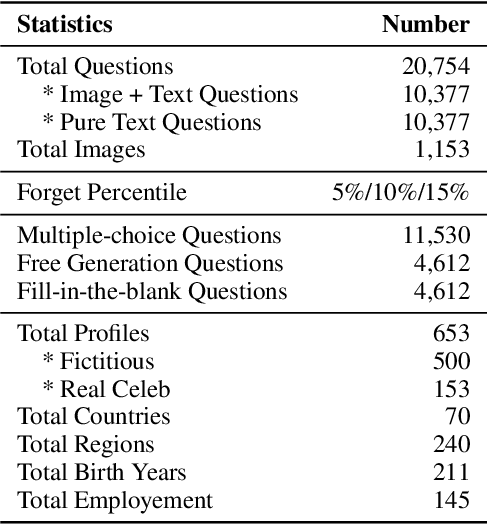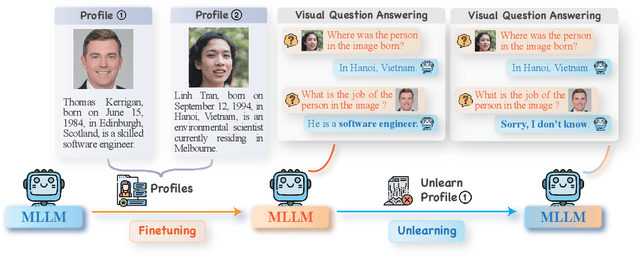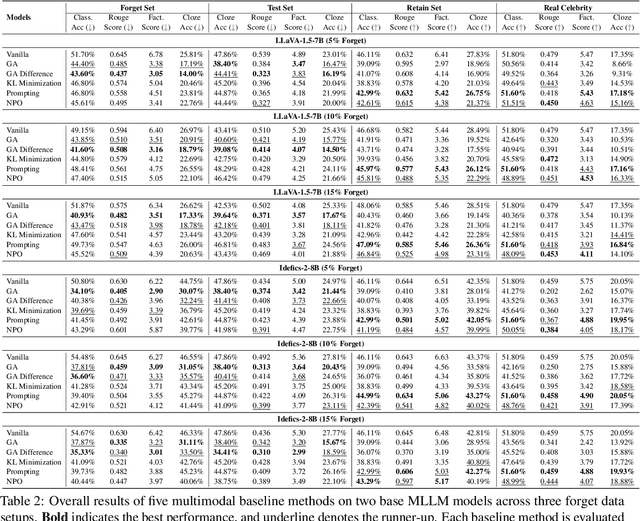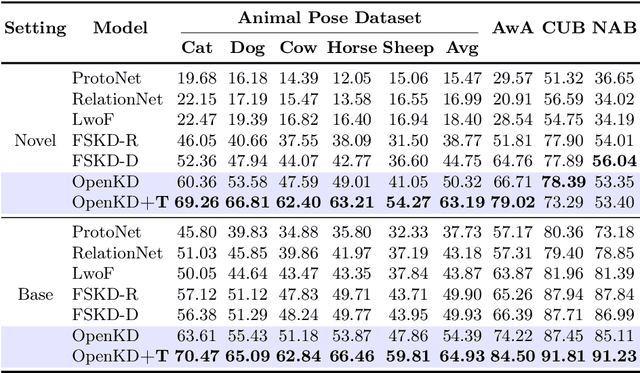Zheyuan Liu
Graph Foundation Models: A Comprehensive Survey
May 21, 2025Abstract:Graph-structured data pervades domains such as social networks, biological systems, knowledge graphs, and recommender systems. While foundation models have transformed natural language processing, vision, and multimodal learning through large-scale pretraining and generalization, extending these capabilities to graphs -- characterized by non-Euclidean structures and complex relational semantics -- poses unique challenges and opens new opportunities. To this end, Graph Foundation Models (GFMs) aim to bring scalable, general-purpose intelligence to structured data, enabling broad transfer across graph-centric tasks and domains. This survey provides a comprehensive overview of GFMs, unifying diverse efforts under a modular framework comprising three key components: backbone architectures, pretraining strategies, and adaptation mechanisms. We categorize GFMs by their generalization scope -- universal, task-specific, and domain-specific -- and review representative methods, key innovations, and theoretical insights within each category. Beyond methodology, we examine theoretical foundations including transferability and emergent capabilities, and highlight key challenges such as structural alignment, heterogeneity, scalability, and evaluation. Positioned at the intersection of graph learning and general-purpose AI, GFMs are poised to become foundational infrastructure for open-ended reasoning over structured data. This survey consolidates current progress and outlines future directions to guide research in this rapidly evolving field. Resources are available at https://github.com/Zehong-Wang/Awesome-Foundation-Models-on-Graphs.
UPME: An Unsupervised Peer Review Framework for Multimodal Large Language Model Evaluation
Mar 19, 2025Abstract:Multimodal Large Language Models (MLLMs) have emerged to tackle the challenges of Visual Question Answering (VQA), sparking a new research focus on conducting objective evaluations of these models. Existing evaluation methods face limitations due to the significant human workload required to design Q&A pairs for visual images, which inherently restricts the scale and scope of evaluations. Although automated MLLM-as-judge approaches attempt to reduce the human workload through automatic evaluations, they often introduce biases. To address these problems, we propose an Unsupervised Peer review MLLM Evaluation framework. It utilizes only image data, allowing models to automatically generate questions and conduct peer review assessments of answers from other models, effectively alleviating the reliance on human workload. Additionally, we introduce the vision-language scoring system to mitigate the bias issues, which focuses on three aspects: (i) response correctness; (ii) visual understanding and reasoning; and (iii) image-text correlation. Experimental results demonstrate that UPME achieves a Pearson correlation of 0.944 with human evaluations on the MMstar dataset and 0.814 on the ScienceQA dataset, indicating that our framework closely aligns with human-designed benchmarks and inherent human preferences.
Frame-wise Conditioning Adaptation for Fine-Tuning Diffusion Models in Text-to-Video Prediction
Mar 17, 2025Abstract:Text-video prediction (TVP) is a downstream video generation task that requires a model to produce subsequent video frames given a series of initial video frames and text describing the required motion. In practice TVP methods focus on a particular category of videos depicting manipulations of objects carried out by human beings or robot arms. Previous methods adapt models pre-trained on text-to-image tasks, and thus tend to generate video that lacks the required continuity. A natural progression would be to leverage more recent pre-trained text-to-video (T2V) models. This approach is rendered more challenging by the fact that the most common fine-tuning technique, low-rank adaptation (LoRA), yields undesirable results. In this work, we propose an adaptation-based strategy we label Frame-wise Conditioning Adaptation (FCA). Within the module, we devise a sub-module that produces frame-wise text embeddings from the input text, which acts as an additional text condition to aid generation. We use FCA to fine-tune the T2V model, which incorporates the initial frame(s) as an extra condition. We compare and discuss the more effective strategy for injecting such embeddings into the T2V model. We conduct extensive ablation studies on our design choices with quantitative and qualitative performance analysis. Our approach establishes a new state-of-the-art for the task of TVP. The project page is at https://github.com/Cuberick-Orion/FCA .
Superficial Self-Improved Reasoners Benefit from Model Merging
Mar 03, 2025Abstract:As scaled language models (LMs) approach human-level reasoning capabilities, self-improvement emerges as a solution to synthesizing high-quality data corpus. While previous research has identified model collapse as a risk in self-improvement, where model outputs become increasingly deterministic, we discover a more fundamental challenge: the superficial self-improved reasoners phenomenon. In particular, our analysis reveals that even when LMs show improved in-domain (ID) reasoning accuracy, they actually compromise their generalized reasoning capabilities on out-of-domain (OOD) tasks due to memorization rather than genuine. Through a systematic investigation of LM architecture, we discover that during self-improvement, LM weight updates are concentrated in less reasoning-critical layers, leading to superficial learning. To address this, we propose Iterative Model Merging (IMM), a method that strategically combines weights from original and self-improved models to preserve generalization while incorporating genuine reasoning improvements. Our approach effectively mitigates both LM collapse and superficial learning, moving towards more stable self-improving systems.
Modality-Aware Neuron Pruning for Unlearning in Multimodal Large Language Models
Feb 21, 2025Abstract:Generative models such as Large Language Models (LLMs) and Multimodal Large Language Models (MLLMs) trained on massive datasets can lead them to memorize and inadvertently reveal sensitive information, raising ethical and privacy concerns. While some prior works have explored this issue in the context of LLMs, it presents a unique challenge for MLLMs due to the entangled nature of knowledge across modalities, making comprehensive unlearning more difficult. To address this challenge, we propose Modality Aware Neuron Unlearning (MANU), a novel unlearning framework for MLLMs designed to selectively clip neurons based on their relative importance to the targeted forget data, curated for different modalities. Specifically, MANU consists of two stages: important neuron selection and selective pruning. The first stage identifies and collects the most influential neurons across modalities relative to the targeted forget knowledge, while the second stage is dedicated to pruning those selected neurons. MANU effectively isolates and removes the neurons that contribute most to the forget data within each modality, while preserving the integrity of retained knowledge. Our experiments conducted across various MLLM architectures illustrate that MANU can achieve a more balanced and comprehensive unlearning in each modality without largely affecting the overall model utility.
Towards Trustworthy Retrieval Augmented Generation for Large Language Models: A Survey
Feb 08, 2025Abstract:Retrieval-Augmented Generation (RAG) is an advanced technique designed to address the challenges of Artificial Intelligence-Generated Content (AIGC). By integrating context retrieval into content generation, RAG provides reliable and up-to-date external knowledge, reduces hallucinations, and ensures relevant context across a wide range of tasks. However, despite RAG's success and potential, recent studies have shown that the RAG paradigm also introduces new risks, including robustness issues, privacy concerns, adversarial attacks, and accountability issues. Addressing these risks is critical for future applications of RAG systems, as they directly impact their trustworthiness. Although various methods have been developed to improve the trustworthiness of RAG methods, there is a lack of a unified perspective and framework for research in this topic. Thus, in this paper, we aim to address this gap by providing a comprehensive roadmap for developing trustworthy RAG systems. We place our discussion around five key perspectives: reliability, privacy, safety, fairness, explainability, and accountability. For each perspective, we present a general framework and taxonomy, offering a structured approach to understanding the current challenges, evaluating existing solutions, and identifying promising future research directions. To encourage broader adoption and innovation, we also highlight the downstream applications where trustworthy RAG systems have a significant impact.
CLIPErase: Efficient Unlearning of Visual-Textual Associations in CLIP
Oct 30, 2024



Abstract:Machine unlearning (MU) has gained significant attention as a means to remove specific data from trained models without requiring a full retraining process. While progress has been made in unimodal domains like text and image classification, unlearning in multimodal models remains relatively underexplored. In this work, we address the unique challenges of unlearning in CLIP, a prominent multimodal model that aligns visual and textual representations. We introduce CLIPErase, a novel approach that disentangles and selectively forgets both visual and textual associations, ensuring that unlearning does not compromise model performance. CLIPErase consists of three key modules: a Forgetting Module that disrupts the associations in the forget set, a Retention Module that preserves performance on the retain set, and a Consistency Module that maintains consistency with the original model. Extensive experiments on the CIFAR-100 and Flickr30K datasets across four CLIP downstream tasks demonstrate that CLIPErase effectively forgets designated associations in zero-shot tasks for multimodal samples, while preserving the model's performance on the retain set after unlearning.
Protecting Privacy in Multimodal Large Language Models with MLLMU-Bench
Oct 29, 2024



Abstract:Generative models such as Large Language Models (LLM) and Multimodal Large Language models (MLLMs) trained on massive web corpora can memorize and disclose individuals' confidential and private data, raising legal and ethical concerns. While many previous works have addressed this issue in LLM via machine unlearning, it remains largely unexplored for MLLMs. To tackle this challenge, we introduce Multimodal Large Language Model Unlearning Benchmark (MLLMU-Bench), a novel benchmark aimed at advancing the understanding of multimodal machine unlearning. MLLMU-Bench consists of 500 fictitious profiles and 153 profiles for public celebrities, each profile feature over 14 customized question-answer pairs, evaluated from both multimodal (image+text) and unimodal (text) perspectives. The benchmark is divided into four sets to assess unlearning algorithms in terms of efficacy, generalizability, and model utility. Finally, we provide baseline results using existing generative model unlearning algorithms. Surprisingly, our experiments show that unimodal unlearning algorithms excel in generation and cloze tasks, while multimodal unlearning approaches perform better in classification tasks with multimodal inputs.
OpenKD: Opening Prompt Diversity for Zero- and Few-shot Keypoint Detection
Sep 30, 2024



Abstract:Exploiting the foundation models (e.g., CLIP) to build a versatile keypoint detector has gained increasing attention. Most existing models accept either the text prompt (e.g., ``the nose of a cat''), or the visual prompt (e.g., support image with keypoint annotations), to detect the corresponding keypoints in query image, thereby, exhibiting either zero-shot or few-shot detection ability. However, the research on taking multimodal prompt is still underexplored, and the prompt diversity in semantics and language is far from opened. For example, how to handle unseen text prompts for novel keypoint detection and the diverse text prompts like ``Can you detect the nose and ears of a cat?'' In this work, we open the prompt diversity from three aspects: modality, semantics (seen v.s. unseen), and language, to enable a more generalized zero- and few-shot keypoint detection (Z-FSKD). We propose a novel OpenKD model which leverages multimodal prototype set to support both visual and textual prompting. Further, to infer the keypoint location of unseen texts, we add the auxiliary keypoints and texts interpolated from visual and textual domains into training, which improves the spatial reasoning of our model and significantly enhances zero-shot novel keypoint detection. We also found large language model (LLM) is a good parser, which achieves over 96% accuracy to parse keypoints from texts. With LLM, OpenKD can handle diverse text prompts. Experimental results show that our method achieves state-of-the-art performance on Z-FSKD and initiates new ways to deal with unseen text and diverse texts. The source code and data are available at https://github.com/AlanLuSun/OpenKD.
Machine Unlearning in Generative AI: A Survey
Jul 30, 2024



Abstract:Generative AI technologies have been deployed in many places, such as (multimodal) large language models and vision generative models. Their remarkable performance should be attributed to massive training data and emergent reasoning abilities. However, the models would memorize and generate sensitive, biased, or dangerous information originated from the training data especially those from web crawl. New machine unlearning (MU) techniques are being developed to reduce or eliminate undesirable knowledge and its effects from the models, because those that were designed for traditional classification tasks could not be applied for Generative AI. We offer a comprehensive survey on many things about MU in Generative AI, such as a new problem formulation, evaluation methods, and a structured discussion on the advantages and limitations of different kinds of MU techniques. It also presents several critical challenges and promising directions in MU research. A curated list of readings can be found: https://github.com/franciscoliu/GenAI-MU-Reading.
 Add to Chrome
Add to Chrome Add to Firefox
Add to Firefox Add to Edge
Add to Edge